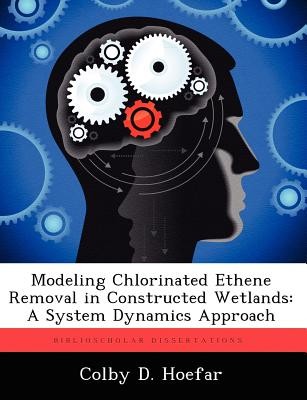
- We will send in 10–14 business days.
- Author: Colby D Hoefar
- Publisher: BiblioScholar
- ISBN-10: 1249584477
- ISBN-13: 9781249584476
- Format: 18.9 x 24.6 x 0.6 cm, softcover
- Language: English
- SAVE -10% with code: EXTRA
Modeling Chlorinated Ethene Removal in Constructed Wetlands (e-book) (used book) | bookbook.eu
Reviews
Description
The purpose of this study is to gain understanding of the dynamics of the processes that degrade Perchloroethene (PCE) to ethylene, or carbon dioxide (CO2), within the confines of a constructed wetland. A system dynamics approach will be used. This model is focused on identifying and optimizing the naturally occurring processes in stratified wetland sediment that reduce mass, toxicity, mobility, volume or concentration of contaminants in groundwater. Contaminant fate and transport within a wetland system is an extremely complex and dynamic process. The entities and mechanisms that drive wetland behavior are dynamic. The system dynamics process is favored over other modeling processes for this study as it develops insight into the behavior of the system as a whole versus one influential mechanism in the system. Confidence in the model was built through verification and testing. Reasonable behavior resulted from a reasonable range of parameter values. The structure of the model represents the mechanisms and their interactions of an actual wetland system. This study provides a fundamental understanding of contaminant fate and transport in a constructed wetland and gives some insight for implementation. Testing identified specific parameters of typical wetland plant species, which could be optimized to have the most effect on contaminant fate. These parameters were the radius of aerobic influence and the number of roots per square meter. A remediation manager can use this model to explore system behavior by controlling or optimizing specific parameters to better manage contaminant fate and transport in a constructed wetland, saving time and resources.
EXTRA 10 % discount with code: EXTRA
The promotion ends in 18d.09:58:45
The discount code is valid when purchasing from 10 €. Discounts do not stack.
- Author: Colby D Hoefar
- Publisher: BiblioScholar
- ISBN-10: 1249584477
- ISBN-13: 9781249584476
- Format: 18.9 x 24.6 x 0.6 cm, softcover
- Language: English English
The purpose of this study is to gain understanding of the dynamics of the processes that degrade Perchloroethene (PCE) to ethylene, or carbon dioxide (CO2), within the confines of a constructed wetland. A system dynamics approach will be used. This model is focused on identifying and optimizing the naturally occurring processes in stratified wetland sediment that reduce mass, toxicity, mobility, volume or concentration of contaminants in groundwater. Contaminant fate and transport within a wetland system is an extremely complex and dynamic process. The entities and mechanisms that drive wetland behavior are dynamic. The system dynamics process is favored over other modeling processes for this study as it develops insight into the behavior of the system as a whole versus one influential mechanism in the system. Confidence in the model was built through verification and testing. Reasonable behavior resulted from a reasonable range of parameter values. The structure of the model represents the mechanisms and their interactions of an actual wetland system. This study provides a fundamental understanding of contaminant fate and transport in a constructed wetland and gives some insight for implementation. Testing identified specific parameters of typical wetland plant species, which could be optimized to have the most effect on contaminant fate. These parameters were the radius of aerobic influence and the number of roots per square meter. A remediation manager can use this model to explore system behavior by controlling or optimizing specific parameters to better manage contaminant fate and transport in a constructed wetland, saving time and resources.


Reviews